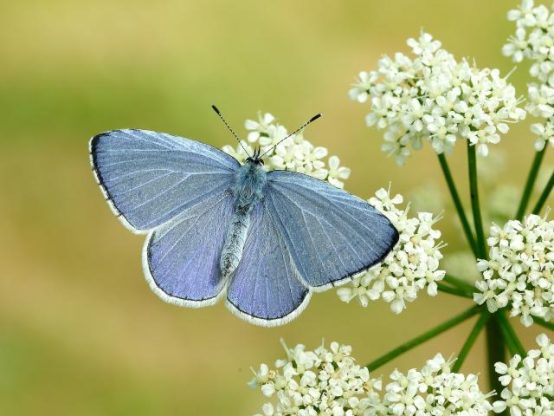by The Curious Scribbler
It was not only butterflies fluttering over my garden in the brilliant sunshine yesterday. In the early evening the sky above the Llanychaiarn Church cemetery was filled with gulls, fluttering and wheeling in the sky, glinting bright white in the sunshine. These were small gulls, about sixty or so, turning and swerving apparently catching high-flying insects above the freshly mown hayfield. Amongst them were about dozen or so Herring Gulls, flapping vigorously amongst them and staying within the flock, but not obviously partaking of the feast. I’ve never seen such a display!
I fetched the binoculars, and concluded that these were Mediterranean Gulls. Black headed with red legs and beak like our native Black- Headed Gulls, but so much whiter, without black wing tips, and with a much gentler call unlike the raucous sounds you hear at a Black-Headed Gull colony.
The show continued for more than half an hour, gulls wheeling in the same place, like ticker tape twirling in the blue.
The Facebook group Ceredigion Birds and Wildlife is a marvellous resource. Within minutes of posting the above video on the site I learnt that two Mediterranean gulls and a juvenile had been spotted in Aberaeron a couple of days ago, then more than twenty on Friday. Five hours before my sighting on Saturday, the same respondent saw a flock of about sixty at Aberaeron, and yet another replied saying that the flock had passed over Llanon during the afternoon. So this group was moving northwards. Today another watcher reported seeing a flock at Newquay.
Mediterranean Gulls used to be quite a rarity in the UK but according to the RSPB and Wildlife Trusts they first bred in Hampshire in 1986 and are now are now resident on parts of the south coast from Hampshire to East Anglia. They also breed, often among our native Black Heads on the Cumbrian Coast and Ireland. Our visiting flock is still in full breeding plumage – the black head reduces to a dark spot by the eye in winter. I wonder where they came from?
Oh and I’ve added the Peacock and the Small Copper to the tally of butterflies in my last post. I could get used to this fine weather!

